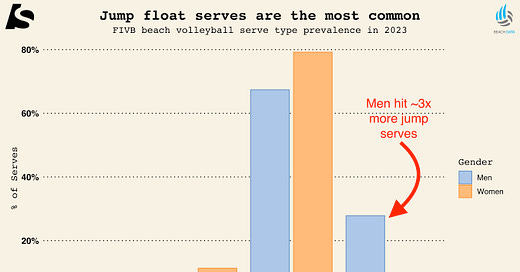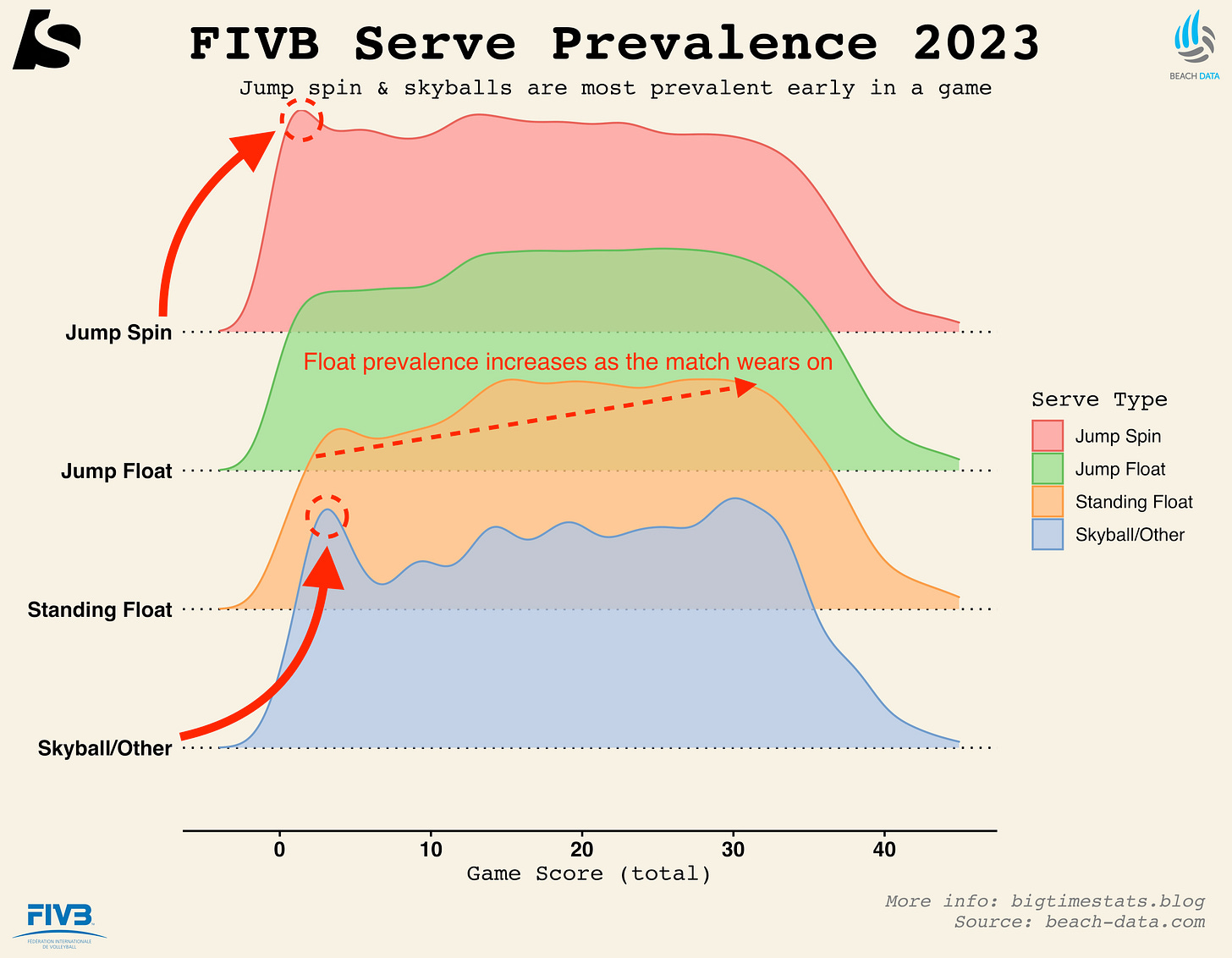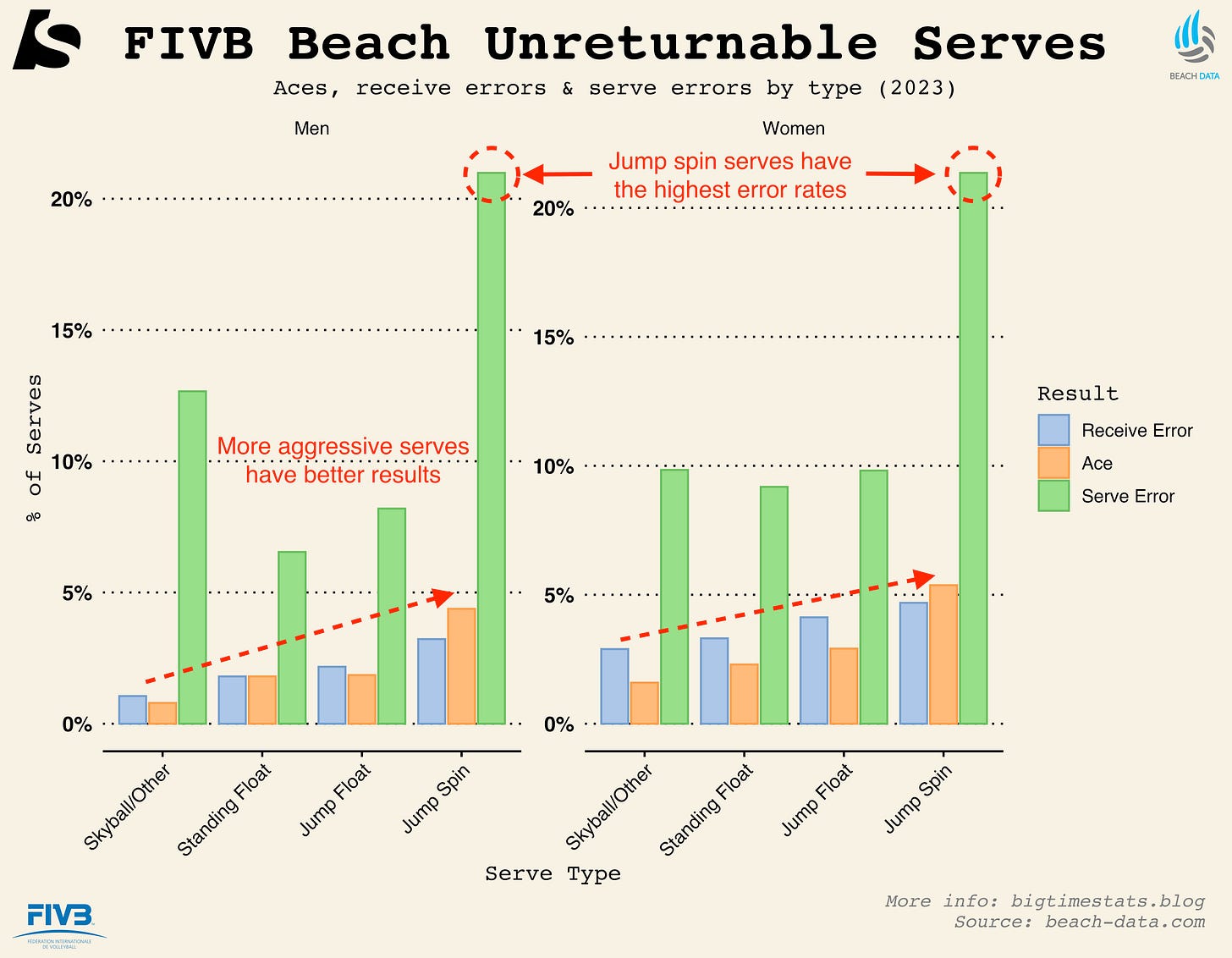Jump serves in beach volleyball - high risk, high reward?
Part 1 of using rally level data to dig deeper into serving strategies on the FIVB world tour
I’ve often wondered what the most effective serve type is in beach volleyball. Should you jump serve all the time, float, or just try to get it in?
I’ve partnered up with Beach Data to analyze the serving game from FIVB tournaments in 2023. They collect rally and touch level data on most professional matches, allowing a deep level of analysis.
Types of Serves
Across both women's and men's tours, the majority of serves are jump floats. However, a noticeable trend emerges: men tend to favor jump spin serves over float serves compared to the women's tour.
Jump spin and skyball serves have a tendency to be more prevalent in the beginning of a set while floats and jump floats are more prevalent towards the end of a set.
The reasons can be multi-fold:
Teams have more energy at the beginning of the set
Teams can take a bigger risk to grab an early lead
Jump spin serves and skyballs can strategically disrupt the opposing team, paving the way for a transition to more conservative float serves later in the set.
Jump float serves have lower error rates and the highest receive errors and aces after jump spin serves
Serve Results
As serves transition from less aggressive to more aggressive (from standing float to jump spin), we observe an increase in aces, receive errors, and serve errors. However, the percentage of serve errors spikes significantly for jump serves in both men's and women's matches, constituting over ~20% of all jump serves, compared to less than ~5% for aces and receive errors each.
This sheds light on why jump spin serves are not as heavily employed as jump float serves. The tradeoff in getting an ace or receive error is not worth the more than doubled risk of missing the serve.
To wrap up, both men's and women's FIVB world tours predominantly feature the use of jump float serves. Jump floats strike a reasonable balance, yielding aces and receive errors while minimizing the likelihood of a serve error.
We'll dig deeper to explore serving on the FIVB world tour in the next posts.







Interesting stuff. I’d like to see how often each type of serve gets the opponent out of system. Yes, that’s subjective so maybe just track points won by serve type. Aces and errors are a small fraction of total serves.